You nominated them. We checked them out. Now it's time to vote

Light Reading's editors today have revealed the finalists for our 2007 Readers' Choice Person of the Year Award.
In mid July, we announced that this year's Leading Lights Awards would include a Person of the Year award. The award's purpose is to allow our readers to recognize one individual who contributed to the business of next-gen communications in a big way during 2007. (See Turn On Your Leading Light.)
Open nominations for the award were accepted from July 16 to August 17. (See Leading Lights Cheat Sheet.)
Last week, our editors narrowed that list down by eliminating the outright silly entries. [Ed. note: Sorry, Mr. Chuckletrousers, if that is your real name.] We also nixed some nominations for some very good people that just didn't make a good enough or clear enough case as to why they should win an award in 2007.
A few of those, for instance, were written as though this were a lifetime achievement award. But we know, as in marriage and mutual funds, past performance does not indicate future results.
Other entries were terribly amusing, but not quite so relevant to the industry at large. The folks representing PuppetGreetings.com, submitted an entry for Jeffrey J. Shrewsbury, its CEO, describing him as having reinvented "the Electronic Greeting card industry with his Zany off-beat Video ecards." We didn't add the chap to the list, even though he sounded like a fighter. "Challenging Goliath, Jeffrey is taking a piece of this 79 million dollar a year industry," the entry stated.
Like Miss Teen South Carolina, we stumble all over ourselves when trying to justify whey we didn't add capable nominees such as Verizon Communications Inc. (NYSE: VZ)'s senior VP of FTTP Data and Video Network Services, Keiko Harvey. Same goes for Soapstone Networks Inc. (Nasdaq: SOAP)'s founder Larry R. Dennison; Alcatel-Lucent (NYSE: ALU)'s John Meyer; Microsoft Corp. (Nasdaq: MSFT)'s Peter Barrett; and Hunter Newby, CTO of Telx Group Inc. Really, the nominee list was an embarrassment of riches.
We also have to give a shout out to a telecom engineer in Bangalore. He nominated himself.
"I'm nominating for the Light Reading person of the year," he earnestly writes. Here's the rest of his entry, untouched by our evil copy editors:
As an Telecom Engineer i want to know the updates of the telecom business and telecom services in order tp achieve this im daily logging into the ligt reading website.It helps a telecom engineer a loot.And im thankful to the Lightreading website owner and the whole team. im very happy to listen for the awards entry.so as an telecom engineer i to want to participate in this.
Sic.
We didn't select him as a finalist, but his entry is our favorite and we definitely hope he keeps talking up Light Reading around the office. Thanks a loot!
Now it's time to see who you, our dear readers, want as Light Reading's 2007 Person of the Year. From our list of 13 lucky finalists, we will hand the prize to the person who gets the most votes between now and September 28, the date the Person of the Year poll will close.
The winner of this award – and all our other Leading Lights Awards – will be announced at a special awards dinner on October 15 in New York City following the first day of our Ethernet Expo. Yes, that is a venue and a date change from what we've said earlier – and we'll hammer home the details very soon. To reserve your seat for, or sponsor a table at, that lovely affair, please contact our events department by sending a note to [email protected].
Without further ado, here are the finalists for Light Reading's 2007 Readers' Choice Person of the Year:
Table 1: Light Reading's 2007 Readers' Choice Finalists
NOMINEE | 5-WORD NOMINATION SUMMARY |
High-speed standards peace maker | |
Cable's version of Jagdeep Singh | |
Big ideas in SDV, FTTH | |
21CN was only the beginning | |
Your phone: a TV station? | |
PBT is good to me | |
He's the source for outsourcing | |
Technology still matters at Juniper | |
Another bet on the future | |
Focus first, then go global | |
Optical superstar calls out incumbents | |
IPTV everywhere? He'll buy that | |
Digital content needs a spokesman | |
To cast your vote for Person of the Year, click here.
But first, read on:
Page 5: Matt Bross, CTO, BT Group
Page 6: Daniel Graf, CEO, decentral.tv
Page 10: Silvio Scaglia, Founder, Babelgum
Page 12: Jagdeep Singh, CEO, Infinera
Page 13: Carl-Henric Svanberg, CEO, Ericsson
Page 14: Mike Volpi, CEO, Joost
— The Staff, Light Reading
Next Page: John D'Ambrosia, Chair of the IEEE's Higher Speed Study Group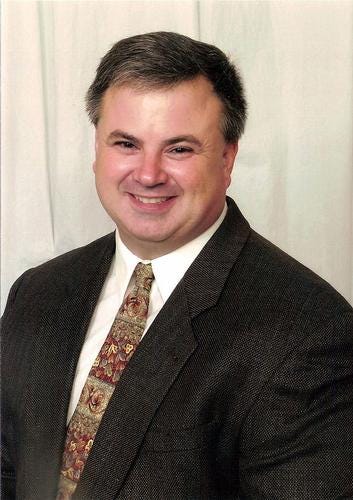 As chair of the Institute of Electrical and Electronics Engineers Inc. (IEEE) Higher Speed Study Group (HSSG), D'Ambrosia is leading the charge for defining the standards behind the next generation of Ethernet products. Since those standards will define how telecom products will be made for years to come, we agree he deserves a spot on our finalist list.
As chair of the Institute of Electrical and Electronics Engineers Inc. (IEEE) Higher Speed Study Group (HSSG), D'Ambrosia is leading the charge for defining the standards behind the next generation of Ethernet products. Since those standards will define how telecom products will be made for years to come, we agree he deserves a spot on our finalist list.
Actually defining the standard may be the easy part. What makes D'Ambrosia's work over the last year noteworthy is that he managed to get the project off the ground in spite of some infighting among the various interests in the group.
"John went in knowing that this would be a very big project and a very controversial one," says Brad Booth, president of the The Ethernet Alliance . Booth says probably no one knew such an involved project has a potential "to take five years of John's life." [Ed. note: We hope he means the pursuit of tech standards is a long process, not that such work would actually shorten D'Ambrosia's life.]
In December, all seemed well in the HSSG, with members agreeing to define a 100-Gigabit Ethernet standard. But January came around and some members of the HSSG became vocal in support of adding 40-Gigabit Ethernet to the group's charter. (See 100-Gig Ethernet Takes First Step, 100-GigE Takes Shape, 100-Gig Ethernet Gets Official Nod, and IEEE Picks 100 GigE.)
A divide soon emerged between server manufacturers, such as Sun Microsystems Inc. that supported adding 40-GigE, and switching vendors like Cisco Systems Inc. (Nasdaq: CSCO) that only saw the need for a 100-GigE standard. After a meeting in May failed to produce consensus on a project authorization request (PAR), D'Ambrosia wrote in the group email that the group was in "a precarious situation." (See 40 GigE Could End Standards Spat.)
Finally in July, HSSG members approved the PAR and the IEEE's "five criteria" required for the study group to continue working on a new Ethernet standard that will include both 40-Gbit/s and 100-Gbit/s rates. (See 100GE Gets OK'd.)
Our readers credit D'Ambrosia, who is also a scientist at Force10 Networks Inc. , for spanning that divide and bringing the groups together to support a single standard. Booth says D'Ambrosia "handled it very well, in being able to get people to discuss these points. There were a lot of times where it was potentially very contentious."
To cast your vote for Person of the Year, click here.
Next Page: Amir Bassan-Eskenazi, CEO, BigBand NetworksIt's been a bumpy ride, but Amir Bassan-Eskenazi, CEO of BigBand Networks Inc. (Nasdaq: BBND), has led his company to two rare accomplishments for cable technology startups.
First, BigBand went public in March, raising roughly $88 million in net proceeds from the offering. (See BigBand IPO: Boing!) Second, the digital video specialist dialed in a second-quarter profit of $1.7 million.
In 2007, BigBand established itself as the leading supplier of switched digital video (SDV) technologies, which allow MSOs to conserve bandwidth by delivering channels in a "switched tier" only when subscribers in a service group request them.
It will face stiff competition from larger and more established companies such as Cisco Systems Inc. (Nasdaq: CSCO)/Scientific Atlanta , Harmonic Inc. (Nasdaq: HLIT), C-COR Corp. (Nasdaq: CCBL), Arris Group Inc. (Nasdaq: ARRS), and Tandberg Television , as more MSOs jump in to deploy and test SDV. But BigBand has built a big lead, with commercial deployments in front of about 6.5 million homes passed. It also appears to be the only vendor in the sector with actual commercial deployments of SDV. (See Cox Flips BigBand's DV Switch and SDV Deployment Snapshot.)
Bassan-Eskenazi has also ensured that BigBand is not a one-trick pony. In addition to supporting the Verizon Communications Inc. (NYSE: VZ) FiOS TV rollout and an emerging next-gen edge QAM business, BigBand is also trying to develop a presence in the ultra-competitive cable modem termination system (CMTS) market. BigBand, which got into that business via acquisition in 2004, believes its developing modular CMTS technology will set it apart as MSOs begin to adopt the new architecture, starting with operators based overseas. (See M-CMTS: Turning Japanese and BigBand Goes Dutch With M-CMTS.)
Of course, BigBand's year hasn't been all fun and games. The company's shares took a sharp dive in early August after projections for the third quarter fell below analysts' expectations. (See BigBand's After-Hours Free Fall .) And BigBand will also have to prove its CMTS investment is one that will pay off. (See BigBand Not Abandoning CMTS .)
But we won't argue with Bassan-Eskenazi's nomination. His impact on the company, and the communications equipment business overall, was as big could be in 2007.
To cast your vote for Person of the Year, click here.
Next Page: Paul Brooks, Senior Network Architect, Time Warner Cable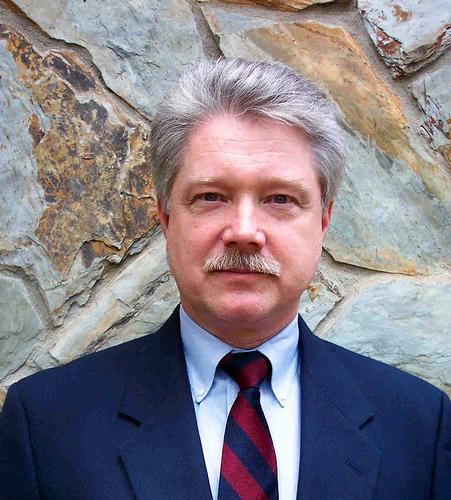 In 2003, Time Warner Cable Inc. (NYSE: TWC) senior network architect Paul Brooks shared his vision for switched digital video (SDV), calling it a "disruptive" technology that will help operators squeeze more value out of their already-upgraded 750 MHz and 860 MHz plants.
In 2003, Time Warner Cable Inc. (NYSE: TWC) senior network architect Paul Brooks shared his vision for switched digital video (SDV), calling it a "disruptive" technology that will help operators squeeze more value out of their already-upgraded 750 MHz and 860 MHz plants.
Now, although Cablevision Systems Corp. (NYSE: CVC) has what looks to be the largest deployment of SDV, no other MSO has deployed SDV in more markets (with several others apparently in process of being installed and deployed) than Time Warner Cable, according to recent data compiled by Cable Digital News. (See SDV Deployment Snapshot.)
With DirecTV Group Inc. (NYSE: DTV) and EchoStar Satellite LLC applying competitive pressure with promises of massive high-definition television (HDTV) offerings, the timing couldn't be better for a technology like SDV.
But we endorse Brooks as a nominee because his vision doesn't start and stop with SDV. Several sources say he is heading up the recently created "RF Over Glass" study group, which is looking into whether it's necessary for the cable industry to develop standards for fiber-to-the-premises (FTTP) architectures. (See RFOG Update .)
Results from that study group and any more official work beyond that could reduce deployment costs and keep the FTTP equipment market relatively "open" if vendor interoperability efforts are added to the mix.
While it's not expected that cable will use FTTP where it already has good hybrid fiber/coax (HFC) plant, it could come in handy in greenfields, particularly in situations where home developers are making it a requirement. And that could really upset the telcos.
A number of MSOs – including Time Warner Cable, Bresnan Communications LLC , CableOne , and Sunflower Broadband – are already testing or deploying FTTP when such situations arise. (See CommScope Sees BrightPath for Cable FTTP.)
To cast your vote for Person of the Year, click here.
Next Page: Matt Bross, CTO, BT Group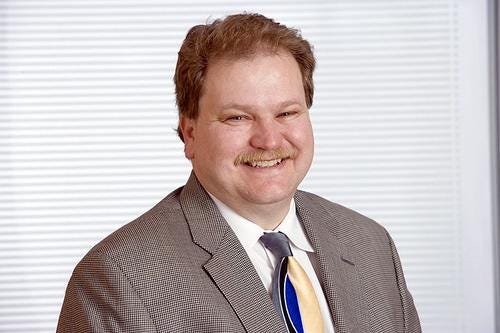 We're no strangers to BT Group plc (NYSE: BT; London: BTA)'s CTO Matt Bross and his role in that carrier's next-generation network, the 21CN. And, as the person nominating him wrote, he's got among the most aggressive technical agendas of any major telco:
We're no strangers to BT Group plc (NYSE: BT; London: BTA)'s CTO Matt Bross and his role in that carrier's next-generation network, the 21CN. And, as the person nominating him wrote, he's got among the most aggressive technical agendas of any major telco:
"Matt should be Light Reading’s Person of the Year for his role in driving innovation strategy and transformation across BT. Matt is one of the top executives enabling BT’s transformation towards a software driven services company."
This year, under the Bross's direction, BT began deploying Provider Backbone Transport (PBT) technology in its 21CN – one of the first major deployments of this new approach to point-to-point Ethernet transport. BT's deployment of PBT has been instrumental in the technology's almost overnight rise to fame and has piqued the interest of other carriers and vendors. (See Nortel, Siemens Win PBT Deals at BT, PBT Gathers Support, Huawei Joins PBT Fan Club, Will Fujitsu Join PBT Parade?, and PBT Parties On.)
Impressive, sure, but we'd back the Bross nomination for this list for his outspokenness alone. This year, Bross pounded many a podium to make the point that telcos really need to change what they are – not just what they sell.
"We need to do more mashups, and we need to connect together for innovation," Bross said in June at the NXTcomm show. He also pointed out that carriers "need to reach beyond the payroll of our organizations. There are major innovation possibilities by opening up collaboration opportunities. We're moving towards a real-time global innovation model... [and] moving from a closed to an open model. It's a big challenge." (See Carriers Surf the Web 2.0 Wave.)Those remarks were later echoed by BT's CEO in the company's conference call, just one small sign that another tall order from the CTO's office is on its way to becoming reality. (See BT Talks Google, IPTV & Collaboration.)
To cast your vote for Person of the Year, click here.
Next Page: Daniel Graf, CEO, decentral.tv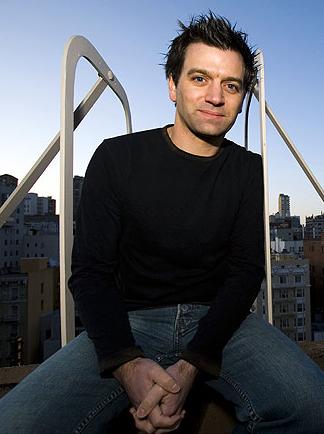 Daniel Graf, CEO of decentral.tv, has enjoyed a busy year with the launch of his company's first service, kyte.
Daniel Graf, CEO of decentral.tv, has enjoyed a busy year with the launch of his company's first service, kyte.
The kyte service marries mobile video, Web video, and social networking. It enables users to launch their own TV channels and broadcast live online or via their mobile phones.
The service launched in April, and, in May, Swisscom AG (NYSE: SCM) announced it had invested a "seven-figure sum" in decentral.tv. Holtzbrinck Ventures also came on as an investor. (See Kyte.tv Lands Investment.)
In June, Nokia Corp. (NYSE: NOK) invested in the company, and, in July, kyte launched its app for Facebook, which brought the service to a more American (and less mobile) audience. (See Nokia Invests in Kyte.tv.)
Through it all, Graf has been diligently working to keep his company going and the kyte service flying largely on the premise, we think, that if the platform reaches out far and wide enough, collecting revenues won't be an issue. It sounds Skype-like, we know, and it's not a coincidence that Atomico (founded by Niklas Zennström) was one of the company's first investors.
We're not sure what the future holds for kyte, but we'll gladly back Graf's nomination, if only as payback for not kicking us out of his office back in January when we pestered him for an early demo. (See Some Notes on Kyte's Flight.)
To cast your vote for Person of the Year, click here.
Next Page: Philippe Morin, President of Metro Ethernet Networks, Nortel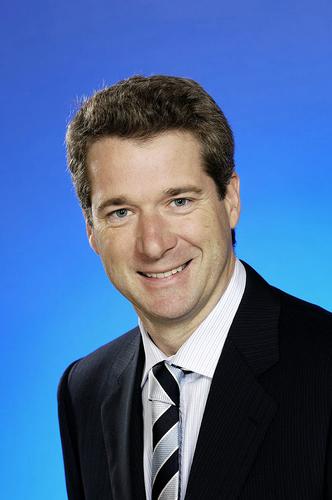 Many carriers and equipment vendors remain in wait-and-see mode, but it's clear that PBT – being standardized as Provider Backbone Bridges, Traffic Engineering (PBB-TE) – has become a critical talking point in carrier Ethernet. (See PBT Parties On.)
Many carriers and equipment vendors remain in wait-and-see mode, but it's clear that PBT – being standardized as Provider Backbone Bridges, Traffic Engineering (PBB-TE) – has become a critical talking point in carrier Ethernet. (See PBT Parties On.)
To front the PBT push, Philippe Morin became president of Nortel's Metro Ethernet Networks business unit about a year ago. A 19-year Nortel veteran, Morin previously headed the company's optical networking group. He's not just moving to the hot hand with Ethernet – his charter includes Nortel's optical and data carrier products.
PBT has pushed Nortel back into relevance when it comes to wireline communications. The company had a strong franchise when optical networks made the transition to 10 Gbit/s, but that star has faded.
Enter PBT. Of all the improbable places to make a mark, Nortel managed to strike at Cisco Systems Inc. (Nasdaq: CSCO)'s Ethernet/IP feifdom. PBT presents an alternative to MPLS, one that Nortel argues makes for a simpler and cheaper network. It also gives Ethernet a determinism that carriers crave, removing one of the longstanding barriers the technology faced in telco circles.
Nortel's PBT customer list isn't overwhelming yet – Dakota Carrier Network LLC and Frontier Online are the most recent announcements. (See Nortel Wins Dakota PBT Contract.) Nortel has dragged quite a bit of mileage, though, out of getting BT Group plc (NYSE: BT; London: BTA) to not only accept PBT in its 21CN network project, but to champion the technology as well. (See BT Pressures Vendors Over PBT.)
Nortel was a punch line a few years ago. Everyone remembers the joke about its stock: If you'd invested an equivalent amount in beer during the bubble, the aluminum recycling kickback would be worth more than Nortel shares. But now, the company's got people firing barbed questions at Cisco and Juniper Networks Inc. (NYSE: JNPR). PBT might not be a success in the long run, but in considering the influential movements of 2007, it's got to be near the top. Hats off to Morin and Nortel for pulling that off.
To cast your vote for Person of the Year, click here.
Next Page: Vineet Nayyar, Chairman and CEO, Tech Mahindra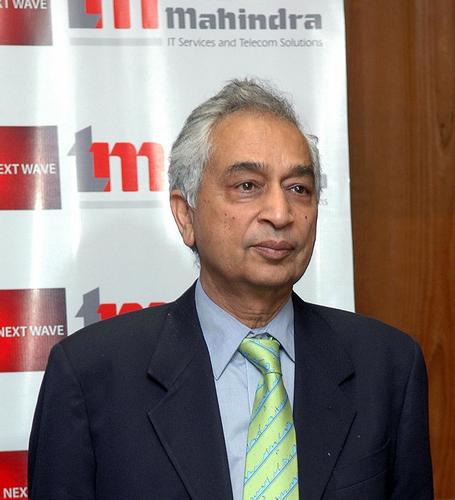 Vineet Nayyar, vice chairman and CEO of Tech Mahindra Ltd. , has led the software and services firm (formerly known as Mahindra-British Telecom) from a one-customer operation to India’s largest outsourcing provider for the telecom sector at a time when the offshore market has been booming. (See Who Does What: Outsourcing to India.)
Vineet Nayyar, vice chairman and CEO of Tech Mahindra Ltd. , has led the software and services firm (formerly known as Mahindra-British Telecom) from a one-customer operation to India’s largest outsourcing provider for the telecom sector at a time when the offshore market has been booming. (See Who Does What: Outsourcing to India.)
In December 2006, Tech Mahindra scored a $1 billion five-year outsourcing contract with BT Group plc (NYSE: BT; London: BTA), the largest publicly announced win by an Indian offshore provider to date. (See BT Picks Tech Mahindra.)
That was impressive. But more interesting were Nayyar's moves in 2007, when he refused to let his company rest on the relationship with BT. Now it has aggressively expanded its customer base across Europe and North America, and it expects to rack up $800 million in revenues this financial year.
Mahindra’s customers include the likes of AT&T Inc. (NYSE: T), Alcatel-Lucent (NYSE: ALU), Motorola Inc. (NYSE: MOT), Qwest Communications International Inc. (NYSE: Q), Vodafone Group plc (NYSE: VOD), Ericsson AB (Nasdaq: ERIC), Bharat Sanchar Nigam Ltd. (BSNL) , and Bharti Airtel Ltd. (Mumbai: BHARTIARTL), reducing the percentage of its revenues that come from BT to 65 percent. The company expects that ratio to fall to around 50 percent over the next two years.
Nayyar has focused Tech Mahindra on tapping into Europe, with its concentration of equipment vendors and telcos. The company is currently scouting for acquisitions in Germany and Scandinavia so that it can have facilities closer to those customers.
Indian outsourcing remains a hot sector for investors, as exemplified by Tech Mahindra’s stock, which soared 51 percent on its first day of trading in August 2006 and has more than doubled in value in the past year. (See Tech Mahindra Soars on Debut.)
To cast your vote for Person of the Year, click here.
Next Page: Kim Perdikou, EVP, Juniper Networks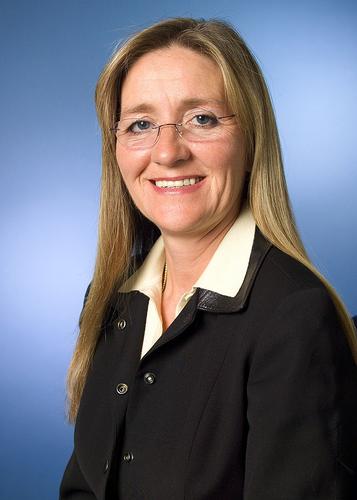 Juniper Networks Inc. (NYSE: JNPR) is back, and analysts are crediting the products. The MX960 brought Juniper into the Ethernet age, and the T1600 could kick its core-router war with Cisco Systems Inc. (Nasdaq: CSCO) back into gear.
Juniper Networks Inc. (NYSE: JNPR) is back, and analysts are crediting the products. The MX960 brought Juniper into the Ethernet age, and the T1600 could kick its core-router war with Cisco Systems Inc. (Nasdaq: CSCO) back into gear.
Juniper's executive VP, Kim Perdikou, as our readers point out, is seen as the one leading the revival of Juniper's Infrastructure Product Group. When she took her post in that group in February 2006, Juniper was caught between product cycles and seemed poised to miss the IPTV and Ethernet waves. (See Analyst: Juniper Faces Tougher Times and Juniper Looks Beyond IPTV.)
Perdikou revamped the group's roadmap and sped up release cycles, resulting in a flurry of product introductions during the past year. It started slow, with some new cards for old routers, an update of its M-series, and an IPTV-minded upgrade to the E320. (See Juniper Makes Its Ethernet Move, Juniper Gets More Redundant, and Juniper Gives Static to IPTV Critics.)
Then came the heavy hitters. The MX960, announced in October, finally gave Juniper an Ethernet-heavy box designed for the IPTV era. (See Juniper Antes Up on Ethernet (Finally).)
Two months ago, Juniper reloaded its core-router arsenal with the T1600, which appears to one-up the Cisco CRS-1 in density and places a bet on a service-aware network core. The box was uncharacteristically launched without a customer announcement, but Juniper's press release hinted that BT Group plc (NYSE: BT; London: BTA) likes the idea. (See Juniper Attacks Cisco's CRS-1.)
So far, the numbers look good. For its June quarter, Juniper saw service-provider revenues grow 18 percent compared with the same quarter a year ago. The MX960, which hasn't been shipping for long, racked up $10 million in revenues. And Juniper claimed the E320 picked up its largest volume of orders in any quarter of its lifetime. (See Juniper Shows Growth (& Potential) in Q2.)
Even though the revenue benefits aren't immediate, investors are applauding the new product lineup. Shares of Juniper are up 73 percent year-to-date.
Juniper still has its concerns, such as the rate of executive turnover. (See Will Juniper Be Burned by the Churn?) It also has to contend with Alcatel-Lucent (NYSE: ALU), which appears to have slipped back into second place in edge routing behind Cisco. But for reigniting a company that's always been known for technological innovation, we'll gladly back Perdikou's nomination.
To cast your vote for Person of the Year, click here.
Next Page: Silvio Scaglia, Founder, Babelgum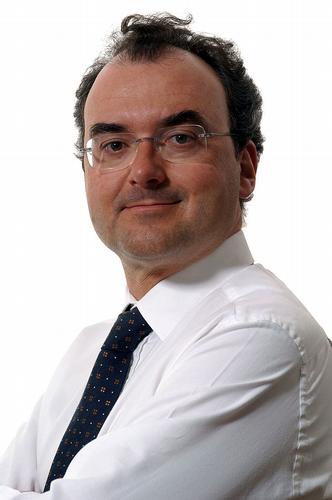 Silvio Scaglia is a man who bets on the future.
Silvio Scaglia is a man who bets on the future.
Scaglia founded Fastweb SpA (Milan: FWB) in 1999, betting big that fiber-to-the-home was the way to go, even though dialup was adequate for most folks back then. His bet paid off in the form of a $292 million payday this year when he sold part of his stake in the company, so we're not about stand in the way of his nomination to this list. (See Scaglia Reduces FastWeb Stake.)
With his windfall, Scaglia has founded and funded Babel Networks Ltd. , the peer-to-peer video sharing service, that makes another big bet. The wager this time is that folks will someday view more video content on demand than they will as part of a traditional broadcast menu.
Scaglia's move from a company that focuses on big pipes to a company that's dedicated to filling those pipes is representative of a larger shift of power in the digital content world, and across the Internet. We'll watch with interest to see what he does next. (See Babelgum Signs Content Partners.)
To cast your vote for Person of the Year, click here.
Next Page: John Scanlon, CEO, Yipes Enterprise Services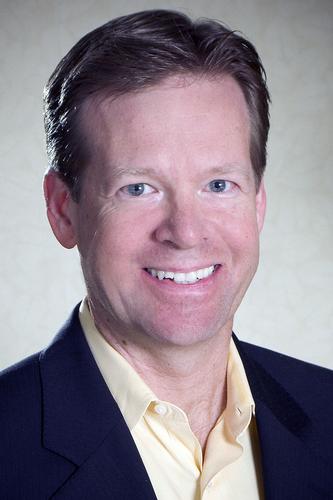 John Scanlon became CEO of Yipes Enterprise Services Inc. in 2004, shortly after the once-hot Ethernet services startup had emerged from bankruptcy. In the three years since, the company has raised over $100 million in VC funding, turned EBITDA and cashflow positive, and achieved a 40 percent rate of annual revenue growth. (See Yipes Revenues Climb.)
John Scanlon became CEO of Yipes Enterprise Services Inc. in 2004, shortly after the once-hot Ethernet services startup had emerged from bankruptcy. In the three years since, the company has raised over $100 million in VC funding, turned EBITDA and cashflow positive, and achieved a 40 percent rate of annual revenue growth. (See Yipes Revenues Climb.)
Not that we're letting him rest on past accolades, but we offer that preamble as a way of noting that Scanlon's influence paid off in a big way this year. Scanlon guided Yipes to focus on specific vertical markets – launching services and applications designed to address customer requirements in the legal, financial, and media sectors – and to expand its reach globally.
Yipes now has 1,000 customers, including the London Stock Exchange , Chicago Mercantile Exchange, Department of the Interior, and 40 percent of the top 25 law firms in the U.S. (See Yipes Feeds LSE and Yipes Serves Nasdaq, NYSE.)
In July, Yipes was acquired by India’s Reliance Communications Ltd. (RCom) for $300 million, a significant premium over valuations ascribed to similar businesses. As part of its global networking ambitions Reliance intends to double Yipes's service coverage in the U.S. and overlay its services on FLAG Telecom Ltd. 's international network. (See Reliance Bags Yipes for $300M and Yipes! Here Comes a Spending Spree.)
While Yipes's FinancialConnect! Service, an Ethernet-based extranet for electronic trading aimed at banks, brokers, and other financial institutions, won accolades in 2006, we agree that 2007 is the year to recognize the company's boss – and his new role on a bigger, international stage. (See LR Names 2006 Leading Lights, HR Presents Ethernet Provider Awards, and Yipes Intros Extranets.)
To cast your vote for Person of the Year, click here.
Next Page: Jagdeep Singh, CEO, Infinera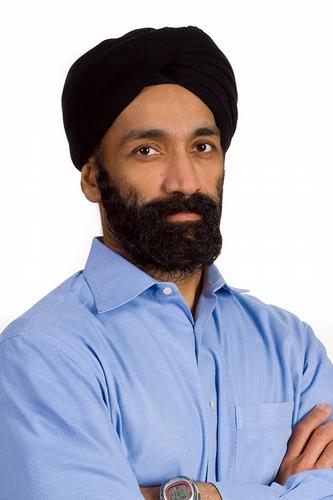 It has been a good year for Jagdeep Singh and his company, Infinera Corp. (Nasdaq: INFN).
It has been a good year for Jagdeep Singh and his company, Infinera Corp. (Nasdaq: INFN).
Over the past 12 months, Infinera has gone public, grabbed a bunch of new customers, and started a headline-grabbing push into 100-Gbit/s Ethernet.
Infinera, which makes a highly integrated DWDM platform, made a splash in its market debut by opening at $16 a share. Although the stock once touched $30 a share, it's settled around $18 since the company's first earnings call. (See Infinera Goes Out – And Up, Infinera Revenues, Losses Widen, and Infinera Smooths Out the Lumps.)
That gives the upstart a market cap of $1.5 billion, which isn't bad for an optical vendor with a truly contrarian business model.
Recent wins included major deals with Cox Communications Inc. and XO Communications Inc. , highlighting two key strategies for the vendor, as it targets MSO long-haul buildouts and attempts to steal optical business away from incumbent competitors.(See Cox Picks Infinera and XO Picks Infinera Again.)
Infinera has been an early mover in support of 100-Gbit/s Ethernet. In November, the company showed off its 100-Gig technology with a team that also included Finisar Corp. (Nasdaq: FNSR), Level 3 Communications Inc. (NYSE: LVLT), Internet2 , and researchers from the University of California at Santa Cruz. For that demo, the team split the 100-Gig signal into 10 lines of 10-Gbit/s each, showing that 100-GigE is possible on current 10-Gbit/s infrastructure. (See Infinera Demos 100GigE.)
But the company's scrappy spirit is just a reflection of its founder. In an interview after his company's first earnings call, Singh told Light Reading that getting customers to switch to Infinera's system is a "good validation" of the economic advantage it can provide. After all, he asked, "Can you name another major North American long-haul network that was not awarded to the incumbent?"
To cast your vote for Person of the Year, click here.
Next Page: Carl-Henric Svanberg, CEO, Ericsson Who does this guy think he is? John Chambers?
Who does this guy think he is? John Chambers?
In a year that featured a Cisco-esque string of acquisitions, Ericsson AB (Nasdaq: ERIC) CEO Carl-Henric Svanberg has very quickly positioned his company as a significant player in telco and cable TV and, by logical extension, Internet video.
It started with the acquisition of IP routing vendor Redback Networks Inc. , followed by video encoder Tandberg Television , and finally GPON vendor Entrisphere Inc. (See Ericsson Offers $2.1B for Redback , Ericsson: Tandberg Is Key to IPTV, and Ericsson Buys Entrisphere.)
The Entrisphere acquisition has so far paid off big as it helped Ericsson land a spot as one of AT&T Inc. (NYSE: T)'s GPON vendors for its greenfield fiber-to-the-home deployments. (See AT&T Picks GPON Players.) Not too shabby for a late arriver to the party to grab a Tier 1 customer and one of the only significant sources of revenue in the crowded North American GPON market.
Svanberg's big spending ways – and focus on growth – haven't hurt the company's bottom line either. The acquisitions, if nothing else, have helped boost Ericsson and raised its profile as a real end-to-end supplier in one of the world's fastest growing telco markets: IPTV. (See Ericsson Reports Q2.)
Now that our editorial board has given the nod to his nomination, maybe he'll buy us a beer.
To cast your vote for Person of the Year, click here.
Next Page: Mike Volpi, CEO, Joost One of our savvier message board monkeys compared former Cisco Systems Inc. (Nasdaq: CSCO) exec Mike Volpi's move to become CEO of Joost to Eric Schmidt's decision to take the top job at Google (Nasdaq: GOOG). He may not have been a subject expert in the company's main business, but he knew "a lot about talking to Wall St. and running a big R&D organization."
One of our savvier message board monkeys compared former Cisco Systems Inc. (Nasdaq: CSCO) exec Mike Volpi's move to become CEO of Joost to Eric Schmidt's decision to take the top job at Google (Nasdaq: GOOG). He may not have been a subject expert in the company's main business, but he knew "a lot about talking to Wall St. and running a big R&D organization."
Volpi's decision to leave Cisco was a big one. His choice to join Joost and take one of the hottest jobs in the digital media world was enough of a masterstroke to garner a spot on our list of nominees.
Joost (and digital video distribution in general) got a nice PR boost with Volpi's arrival at his new gig. The years Volpi spent trend-spotting, talking to the world's largest communications carriers, and presiding over dozens of acquisitions have earned him a rare credibility with financial and technology types alike.
Sure, we're a little thin on what Volpi has accomplished since joining Joost. We're not just giving him a nomination nod because he changed jobs, otherwise Tony Li would have won the award for most of the last decade.
What we do know is that Volpi's aware that the digital delivery of content has been a minefield of bad business models – and yet there's still a world of opportunity waiting for the companies who get it right without going to war with the big studios.
Volpi and one of our other finalists – Silvio Scaglia – are just the kind of Internet-savvy grownups the digital video world needs right now. And, yes, being in the right place at the right time can indeed get you on a list like this.
So who deserves to be our Person of the Year? Well, that's for YOU to decide.
Table 1: Light Reading's 2007 Readers' Choice Finalists
NOMINEE | 5-WORD NOMINATION SUMMARY |
High-speed standards peace maker | |
Cable's version of Jagdeep Singh | |
Big ideas in SDV, FTTH | |
21CN was only the beginning | |
Your phone: a TV station? | |
PBT is good to me | |
He's the source for outsourcing | |
Technology still matters at Juniper | |
Another bet on the future | |
Focus first, then go global | |
Optical superstar calls out incumbents | |
IPTV everywhere? He'll buy that | |
Digital content needs a spokesman | |
To cast your vote for Person of the Year, click here.
The Leading Lights Awards will be presented at Ethernet Expo 2007, a conference and exhibition that will explore major carrier Ethernet networking and service trends. To be staged in New York City, October 15-17, admission is free for attendees meeting our prequalification criteria. For more information, or to register, click here.
Read more about:
OmdiaAbout the Author(s)
You May Also Like











